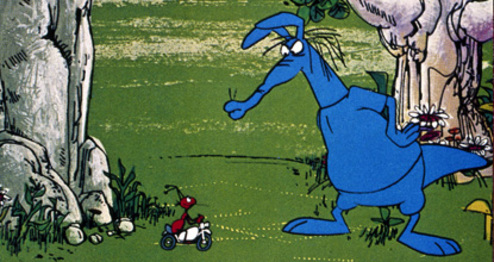
Posted on 07/21/2025 12:43:59 PM PDT by Red Badger

New research tracing the evolutionary history of animals that subsist on ants and termites has revealed that creatures with such unique appetites have evolved at least a dozen times, offering researchers a glimpse into the influence social insects have had on the adaptation of mammals.
The field of myrmecophagy, which deals with animals that consume ants and termites, has now been revealed to be a significant driver of evolutionary adaptations across a wide array of mammalian species.
These adaptations, which include hallmarks such as elongated tongues and fewer teeth in ant-eating mammals, emerged in response to the unique challenges associated with feeding on these small, yet protein-rich, social insects.
By combining insights from the fossil record with ecological data spanning nearly 4,000 mammal species, recent work, detailed in a new research study, now unites the evolution of these unique traits with the rise of social structures in ants and termites over time, with origins dating back to the Cenozoic era.
The Surprising Influence of Social Insects
Despite their modest size and reputations for often becoming unwanted pests when found within our homes, ants and termites have played a surprisingly dominant role as ecological forces throughout time, often playing a critical role in shaping many terrestrial environments.
Primarily, these insects have at times acted as powerful agents of natural selection, as species known as obligate myrmecophages possess distinctive traits that make them suited for bulk feeding, including their long, sticky tongues and reduced (or even absent) teeth.

An anteater seen in the wild in Brazil (Image Credit: Nareeta Martin/Unsplash)
Today’s anteaters, which fall within the suborder Vermilingua, are the most commonly recognized variety, comprising four different species: the giant anteater (Myrmecophaga tridactyla), the silky anteater (Cyclopes didactylus), the southern tamandua (Tamandua tetradactyla), and the northern tamandua (Tamandua mexicana). Each of these four primary species belongs to the order Pilosa, which also includes sloths.
Although anteaters are commonly grouped alongside other mammals that consume social insects like aardvarks and echidnas, they aren’t closely related to them. The perceived similarities are more a result of convergent evolution in response to similar ecological niches, which can often produce creatures from vastly different areas of the animal kingdom that still bear striking superficial similarities.
Anteaters Evolving by the Dozen
The new research focuses on specialized feeding on ants and termites, arguing that it has independently evolved at least a dozen times across known mammal species.
Generally stemming from insectivorous or carnivorous ancestors, the researchers note that there was one instance where a rare evolutionary reversal appears to have occurred, involving a species that transitioned away from consuming social insects. This singular case seems to suggest that once an animal lineage becomes specialized, it is likely difficult for them to revert following the gradual acquisition of such specialized anatomical and behavioral traits.
Intriguingly, although an abundance of ants and termites exist in the modern world, the study team’s findings suggest that their presence as a specialized food source is a relatively recent development, evolutionarily speaking. While both lineages—ants and termites—date back to the Cretaceous, it wasn’t until the Cenozoic era that they became ecologically dominant, forming large colonies that could support dedicated mammalian predators.
Fundamentally, the study’s findings offer an evolutionary framework that unites the emergence of social insects with repeated and diverse instances of myrmecophagy in mammals, revealing a dynamic relationship and showcasing the deeply intertwined evolutionary histories of insects and animals.
In the case of tiny organisms like ants and termites, the research also reveals how deeply influential they can be—even as a mere food source—capable of shaping the biology of predators that consume them across periods of millions of years.
The new study, “Post K-Pg rise in ant and termite prevalence underlies convergent dietary specialization in mammals,” appeared in the International Journal of Organic Evolution on July 16, 2025.
Micah Hanks is the Editor-in-Chief and Co-Founder of The Debrief. He can be reached by email at micah@thedebrief.org. Follow his work at micahhanks.com and on X: @MicahHanks.

Strangely enough, aardvarks do not appear to be evolving in a fashion similar to anteaters.
Because ants are delicious?
On a side note, do ya ever notice that the Aardvark sound a lot like Bernie Sanders? d;^)
“Evolution” is currently producing new species? I’d love to see an example of a new “anteater” recently produced by “evolution.”
I remember the ant sounding kind of like Dean Martin. If they were deliberately mimicking celeb voices, maybe the aardvark was supposed to sound like Jackie Mason (which is definitely like Bernie, but amusing).
Trouble all around [2006/02/10]
Too long to read, but let me guess... Too many ants?
Or do I not understand the question?
All we are is dust in the wind….
The poor little things probably can’t yawn.
https://www.euclidlibrary.org/sites/default/files/migrated//giant-anteater-tongue.jpg
I'm soooo dead for saying that!
“the ANTswer my FRiend, is blowing in the wind”.
the animals with survival skills survive
the animals without survival skills do not
where are the slow rabbits?
they were lunch
not even a chance to hump
Disclaimer: Opinions posted on Free Republic are those of the individual posters and do not necessarily represent the opinion of Free Republic or its management. All materials posted herein are protected by copyright law and the exemption for fair use of copyrighted works.